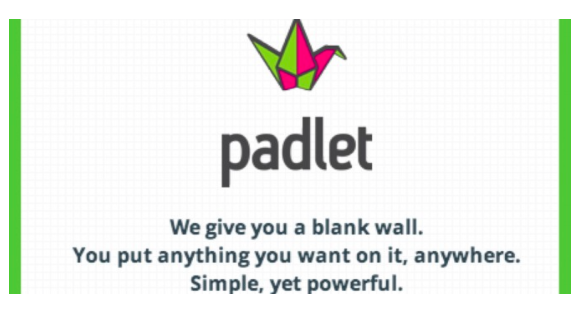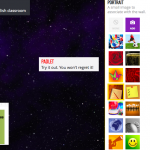As Business English teachers, travelling from company to company, we usually have to make do with the equipment available to us. In some cases, that might not even include a whiteboard or flip chart. If, however, you are lucky enough to have an interactive whiteboard, or even just a projector to hook your laptop up to, you’re ready to make that move from course books and handouts to a more creative ‘connected classroom’.
The range of websites and apps out there is staggering. You can produce everything from podcasts and word clouds to infographics and videos, but what then? You need some way of bringing it all together, a place to save and share your students’ finished work. For this, Padlet.com is ideal.
Padlet lets you create a digital wall, similar to a noticeboard or pin board. You can post content for your students, adding documents, videos and links related to a topic being covered in class or you can create a wall for collaboration and allow students post their work, comments, questions there.
I love it because it’s easy to use and because students do not need to sign up to access walls. You can have multiple padlet walls, one for each group or project. You can customise your wall, make it public or private, pick an address or url for each one and share the link easily. You can choose to be notified when students post something, which is handy if you want to give feedback on homework. I could go on and on.
Watch this video on how to get started:
Some of the many ways teachers can use Padlet:
- Share content with your students. Have a wall dedicated to each different group. Add anything you see that might be of interest to them, related to their business or the topic being covered in class. This can be used for homework or as a source of further reading for when they have some extra time on their hands and fancy some English practice.
- Create walls for specific topics. I have walls for things like presentation skills or CV preparation. Students and teacher add relevant content. These walls could potentially be reused again and again.
- Students create their own walls and use them as a digital portfolio. They save their finished work there. It’s a great way of charting their development and at the end of the course, they can present a selection of their work.
- Use a wall for team work and brainstorming. The free flow layout allows you to move posted ideas around to categorise them as good, ok or impractical.
- Have a wall for each course book or course book unit – students add new vocabulary, links to extra grammar practice, additional texts relating to the unit’s content.
- Display – photos of art projects, finished essays (stream mode works well for this also).
- Discussion (stream mode). Post a statement and students give opinions and comment on the opinions of their classmates.
- Students can each create a wall and use it as a learning diary, a language notebook, or a resource scrapbook. Save links to websites, notes on grammar, vocab lists, inspiring quotes. As walls have no limit to their size, this makes them a great bookmarking tool.
- Use a wall for introductions at the start of a course. Students can share information about themselves, photos, even post an audio greeting. You could also collectively create a list of everyone’s contact details, so if someone misses class, they have the chance to get in touch with fellow-classmates to find out what they missed.
Go check it out! I’m sure you’ll love it as much as I do.
www.padlet.com







